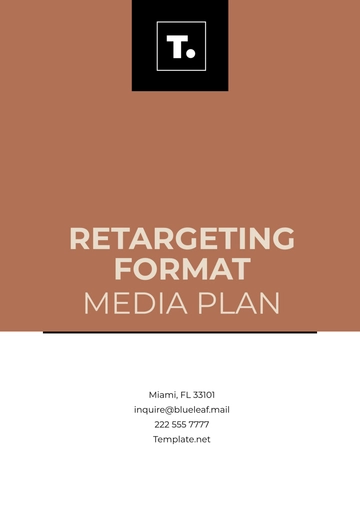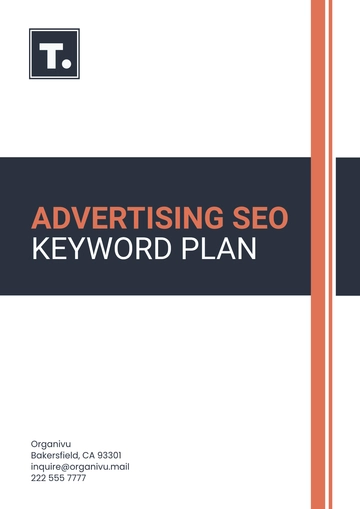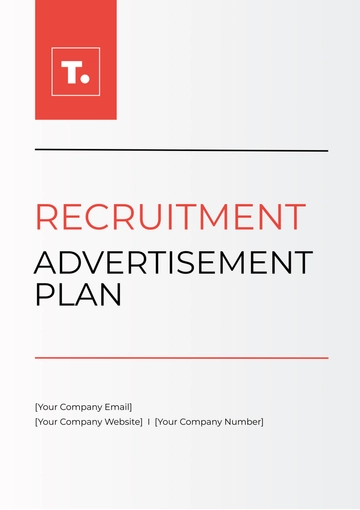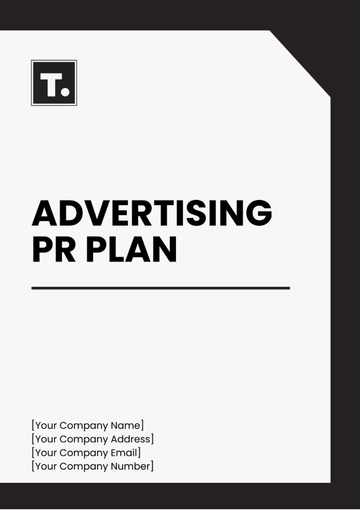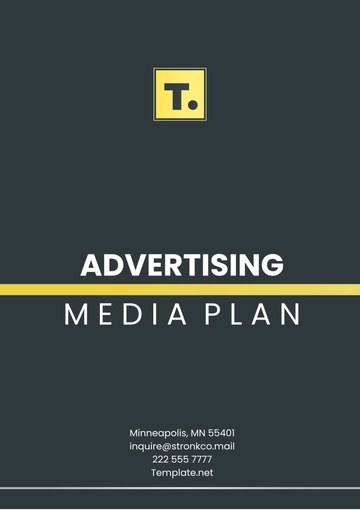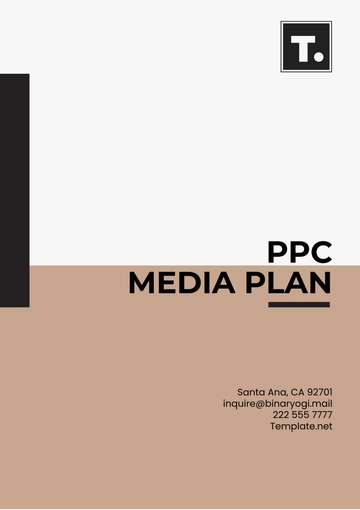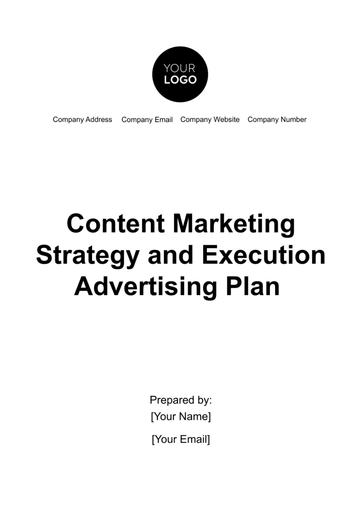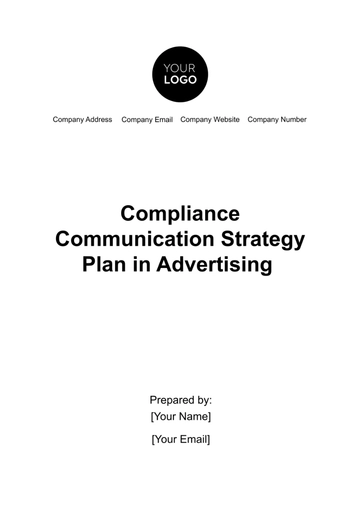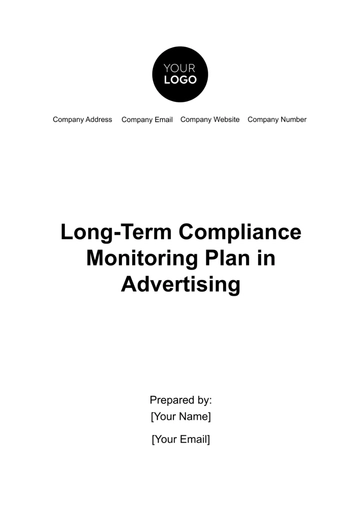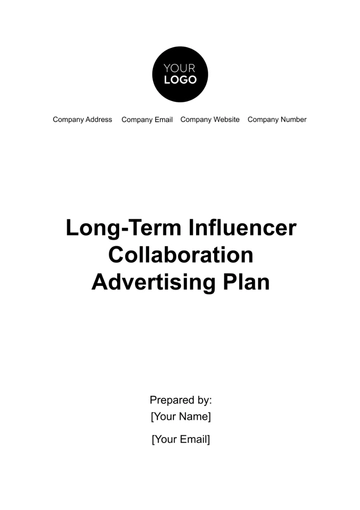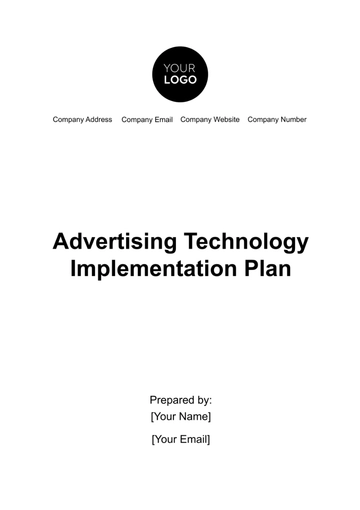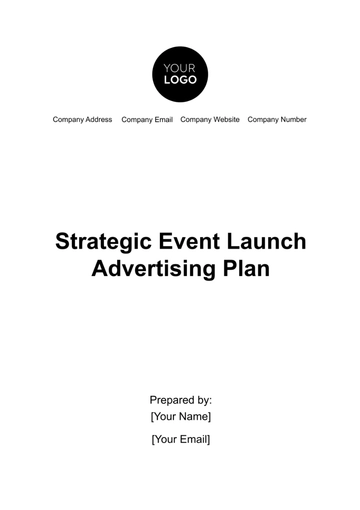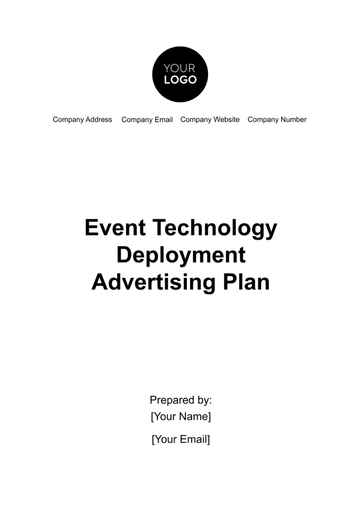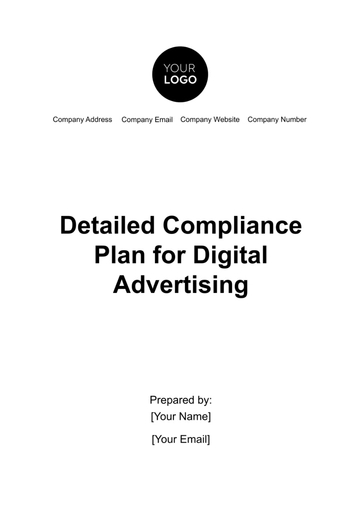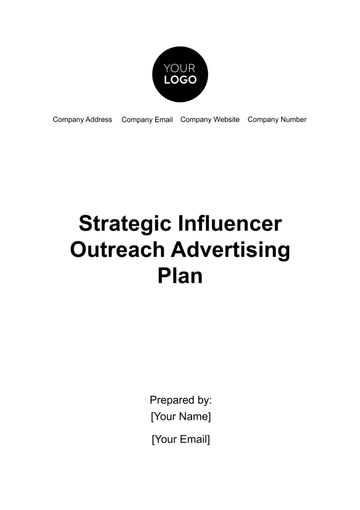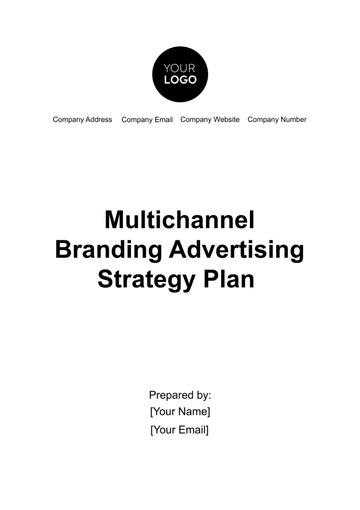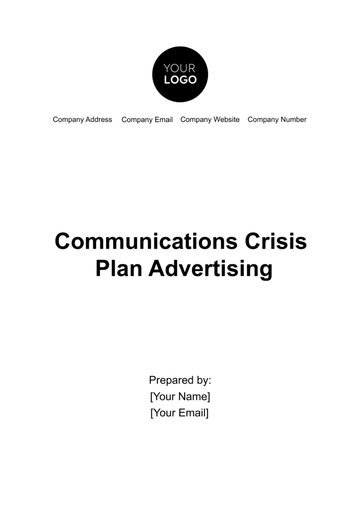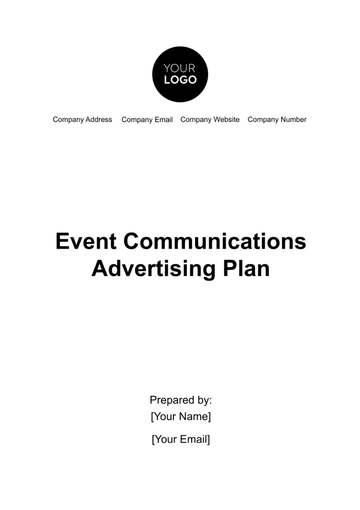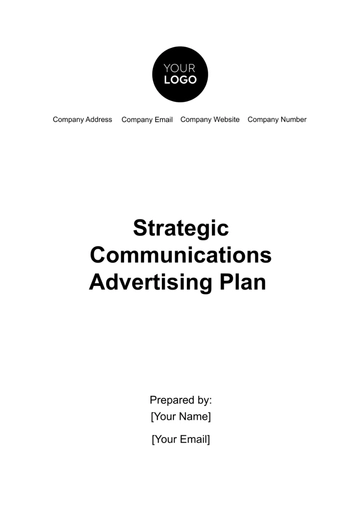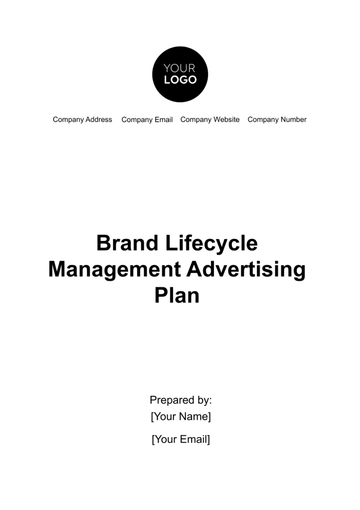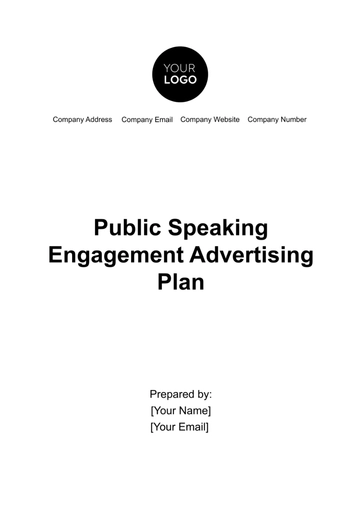Free Advertising Multi-Platform Media Buying Plan
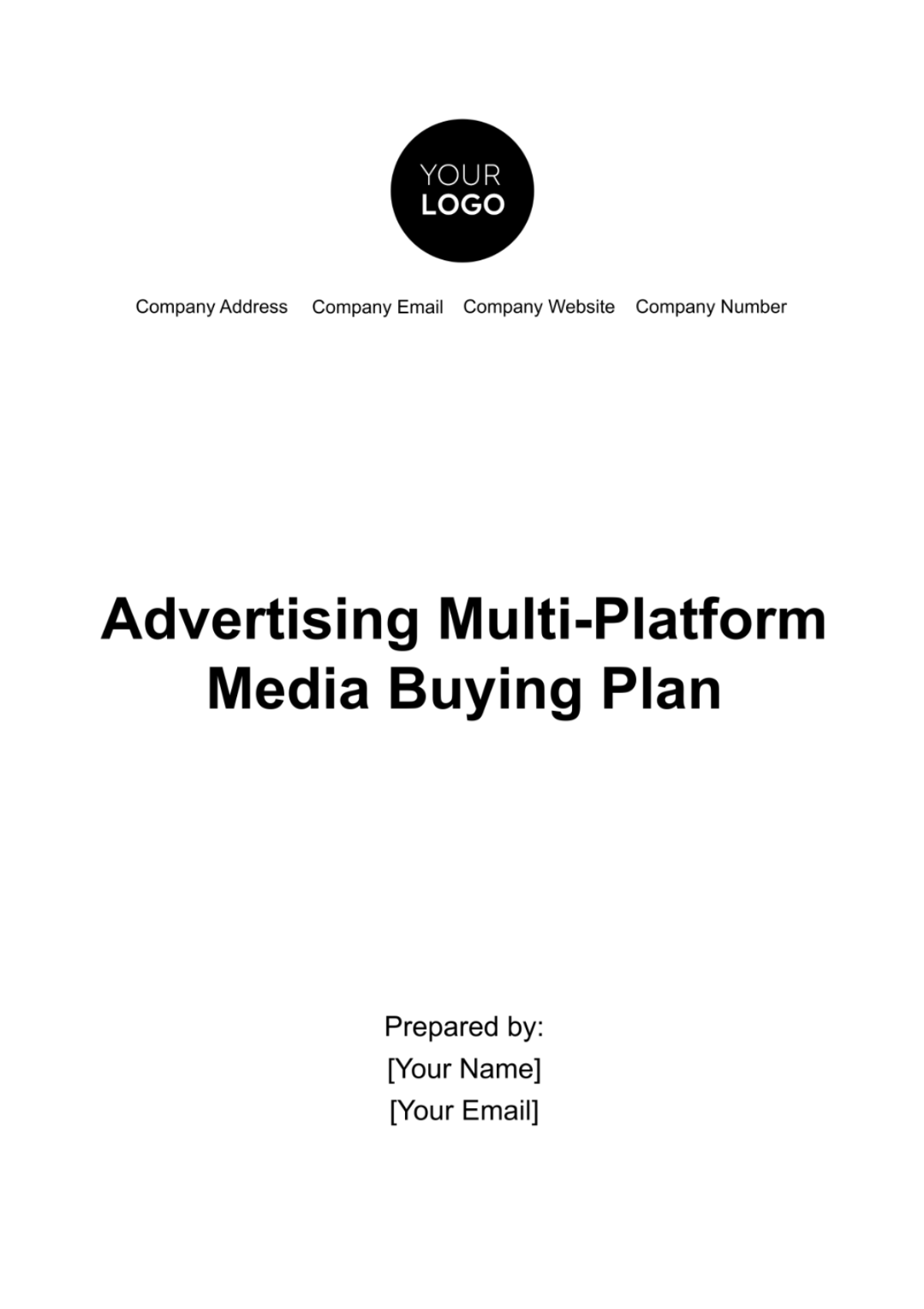
I. Executive Summary
This executive summary is intended to provide an in-depth introduction to a meticulously crafted media plan, one that has been specifically designed to propel the growth and success of [Your Company Name] to unprecedented new heights. In order to achieve this, we will venture deeply into various key components of the media plan.
These components include clearly-defined objectives that guide the direction of our plan, the comprehensive scope which depicts the breadth and extent of our pursuits, the meticulously picked digital and social platforms that have been chosen for their relevance and impact, and lastly, the crucial strategies that underpin the entirety of this initiative. All these elements together serve as the foundation of this transformative endeavor that aims to revolutionize the way [Your Company Name] operates and flourishes in its respective industry.
A. Plan Objectives and Scope
Objective:
At the core of this media plan lies a singular and resolute objective: to elevate [Your Company Name] to new heights of brand visibility and to ignite a surge in sales. Statistical data underscores the importance of this endeavor.
Scope:
The scope of our plan is both focused and forward-thinking. It encompasses the second and third quarters of the fiscal year, aligning with the peak of consumer activity. Our strategic targeting zooms in on urban markets within the [United States], where consumer density and market potential are at their zenith. By concentrating our efforts, we ensure that every advertising dollar is optimized for maximum impact.
B. Chosen Platforms and Strategies
Digital:
Focused on social media and search engine marketing. Our focus on social media is substantiated by research findings, which reveal that consumers spend an average of 2.5 hours per day on social media platforms. This presents a ripe opportunity to engage and convert potential customers. Simultaneously, search engine marketing ensures that our message reaches individuals actively seeking products like ours, resulting in high conversion rates.
Traditional:
Selection of prime-time TV slots and national newspapers. The inclusion of traditional media, including prime-time TV slots and national newspapers, is a testament to our holistic approach. Case studies from industry leaders showcase the continued impact of traditional media.
Our media plan is more than a strategy; it's a blueprint for transforming [Your Company Name]'s brand visibility and sales growth. Backed by statistics, case studies, and a commitment to our objectives, this plan charts a course for success in the competitive media landscape.
II. Target Audience and Market Analysis
In this section, we delve into the intricacies of our target audience and provide valuable insights into market trends that will shape our strategies. By gaining a profound understanding of who we're reaching and the dynamics of the market we're navigating, we set the stage for success.
A. Audience Demographics and Psychographics
Core demographic:
Adults aged 25-45, middle to upper-income bracket. This demographic range is strategically chosen due to its high purchasing power and consumer influence. Furthermore, our audience falls within the middle to upper-income bracket, affording them the capacity to make substantial buying decisions.
Lifestyle and interests:
Tech-savvy, environmentally conscious, and health-oriented. Environmental consciousness is a defining trait, with a commitment to sustainability and eco-friendly choices. Additionally, their health-conscious approach translates into a proclivity for products that promote well-being. This alignment of values and interests positions our audience as receptive to our messaging and offerings.
B. Market Trends and Insights
Increased digital media consumption:
Market trends underscore the growing prominence of digital media consumption, with an emphasis on mobile devices. The average American now spends over [3 hours] per day on their mobile phones, primarily engaging with social media, news, and entertainment apps. This surge in digital media consumption presents a significant opportunity for our campaigns, as our audience is highly active on these platforms.
Rising trend in eco-friendly and health-conscious products:
Market insights reveal a noticeable shift in consumer preferences towards eco-friendly and health-conscious products. Research findings indicate that [70%] of consumers are willing to pay more for products that are environmentally sustainable. Similarly, health-consciousness has led to increased demand for products that promote physical and mental well-being. Capitalizing on these trends aligns our campaigns with the evolving landscape of consumer choices.
Our target audience and market analysis illuminate the path forward for [Your Company Name]'s media plan. By understanding the demographics, psychographics, and market trends, we are well-equipped to craft messaging and strategies that resonate with our audience's values and preferences.
III. Media Platform Selection
The choice of media platforms is a pivotal aspect of our media plan, and it requires thoughtful consideration. In this section, we delve into the rationale behind our platform selection and provide insights into their respective effectiveness. Our aim is to ensure that our message not only reaches our target audience but also resonates with them, setting the stage for engagement and conversion.
A. Platform Rationale
Digital:
Our target demographic, aged [25-45], is known for their high engagement with digital platforms. Studies reveal that individuals within this age group spend an average of [2.5 hours] per day on social media. Compared to traditional media, digital advertising offers competitive pricing and allows us to optimize our budget for maximum reach and impact.
Traditional:
While digital media is a powerhouse, traditional media remains a formidable force with distinct advantages. The broad reach of traditional platforms, such as TV and national newspapers, is unparalleled. Case in point, prime-time TV slots reach a staggering [70%] of our target demographic weekly. Furthermore, traditional media channels carry a sense of brand credibility that can enhance trust and recall among consumers.
B. Platform Effectiveness
Digital:
Our choice of digital platforms is substantiated by the fact that social media ads, on average, achieve a [4% engagement rate]. This means that our content has the potential to captivate and compel a significant portion of our target audience, fostering interactions that can translate into sales and brand loyalty.
Traditional:
The effectiveness of traditional media, particularly TV spots, is exemplified by their unmatched reach. By securing prime-time TV slots, our message has the potential to reach an astounding 70% of our target demographic on a weekly basis. This level of exposure is instrumental in creating brand recall and recognition, paving the way for a successful media plan.
IV. Budget Allocation and Schedule
Efficient budget allocation and strategic scheduling are the pillars upon which our media plan stands. In this section, we delve into the details of our budget breakdown and scheduling strategy, illuminating our commitment to optimizing every advertising dollar and ensuring that our message reaches the right audience at the right time.
A. Budget Breakdown
Total Budget:
The allocation of our budget is a reflection of our data-driven approach and understanding of the media landscape. With a total budget of [$1 million], we have divided our resources to maximize impact. A significant portion, [70%], is dedicated to digital campaigns, while the remaining [30%] is allocated to traditional media. This distribution is substantiated by market trends, which show that digital advertising offers a cost-effective avenue for reaching our tech-savvy target audience, while traditional media ensures broad reach and credibility.
Digital:
Our digital allocation is informed by platform effectiveness and strategic goals. With [$700,000] earmarked for digital campaigns, we have allocated [$400,000] to social media, recognizing its potential to engage our target demographic. Additionally, [$300,000] is dedicated to Search Engine Marketing (SEM), ensuring that our message is visible to those actively seeking products in our niche.
B. Traditional:
Traditional media remains a potent channel for reaching a broad audience and building brand credibility. To harness this potential, we have allocated [$300,000] to traditional media. This budget includes [$200,000] for prime-time TV slots, positioning our message for maximum exposure. Additionally, [$100,000] is dedicated to print advertising.
C. Scheduling Strategy
Digital:
Our digital strategy hinges on maintaining a continuous presence while strategically intensifying our efforts during peak seasons. By ensuring a constant stream of digital content and advertising, we maintain engagement and visibility. However, during peak seasons, such as holiday shopping periods, we ramp up our digital campaigns to capitalize on increased consumer activity.
Traditional:
Traditional media scheduling is marked by precision and reach. By securing prime-time TV slots, we ensure that our message is broadcast when our target audience is most engaged. Additionally, our presence in Sunday editions of national newspapers aligns with the weekend reading habits of a vast audience, enhancing brand recall and recognition.
Our budget allocation and scheduling strategy are not arbitrary choices but a result of meticulous planning and data-driven decision-making. By optimizing our budget and strategically scheduling our campaigns, [Your Company Name] is poised to make a significant impact on brand visibility and sales growth.
V. Measurement and Optimization
Effectiveness and adaptability are central to any successful media plan. In this section, we dive into the realm of measurement and optimization, where we outline the key metrics we'll be monitoring and the strategies we'll employ to fine-tune our campaigns. Our commitment to data-driven decision-making ensures that we stay agile and responsive throughout the campaign duration.
A. Performance Metrics
Digital:
Click-through rates (CTR) will measure the effectiveness of our ad copy and design in enticing our audience to engage further. Conversion rates will provide insights into how well our digital visitors transition from being potential customers to actual ones. Lastly, cost per acquisition (CPA) will help us gauge the efficiency of our spending in acquiring new customers. Collectively, these metrics provide a comprehensive view of our digital campaign performance.
Traditional:
Traditional media evaluation demands a different set of metrics. Reach measures the number of individuals exposed to our message, frequency assesses the number of times they encounter it, and brand recall surveys ascertain how well our message sticks in their memory. These traditional metrics enable us to quantify the impact of our campaigns in terms of audience reach and message retention.
B. Optimization Strategies
Monthly review meetings:
Our commitment to agility and optimization is underpinned by regular monthly review meetings. During these sessions, we'll dissect campaign performance, scrutinize key metrics, and identify areas that require adjustment. This proactive approach ensures that we don't wait until the end of the campaign to make necessary changes. Instead, we adapt and refine our strategies in real time, optimizing our efforts for maximum impact.
Utilizing analytics:
The power of data analytics is harnessed to its full extent in our optimization strategies. As we gather insights from our campaigns, we'll leverage this data to shift budget allocation towards platforms that demonstrate higher performance. By redirecting resources where they yield the best results, we maximize the ROI of our media plan and ensure that our advertising dollars are put to their most efficient use.
Our approach to measurement and optimization reflects our commitment to achieving the best possible outcomes for [Your Company Name]. By setting clear performance metrics and implementing real-time optimization strategies.
VI. Conclusion
Our company at [Your Company Name] has developed a comprehensive plan involving media buying across multiple platforms. The significant objective behind this is to harness the unique strengths inherent to each variety of media. Combining various media types, we believe, will result in the creation of a robust, unified advertising campaign providing maximum impact. Achieving this level of successful campaign coordination involves carefully balancing our budget allocations between different media platforms. At the same time, strategic timing is also integral to our plans as it ensures we acquire the right media spaces when they are most likely to yield the greatest influence among consumers.
By effectively utilizing the disparate strengths of varying media types and combining it with strategic allocations and timing, we have a dual aim. Firstly, to maximize the reach of our advertising, tapping into the broadest possible audience base and secondly, to further strengthen our brand recognition in the market, enhancing and solidifying our place.
Furthermore, it is imperative to note that these efforts are designed to not only elevate brand presence and recognition but to result in a tangible and significant return on investment. It is expected that these meticulously planned and executed efforts will result in financially beneficial outcomes that make our extensive multi-platform media buying strategy more than worthwhile.
- 100% Customizable, free editor
- Access 1 Million+ Templates, photo’s & graphics
- Download or share as a template
- Click and replace photos, graphics, text, backgrounds
- Resize, crop, AI write & more
- Access advanced editor
Elevate your advertising game with Template.net's Advertising Multi-Platform Media Buying Plan Template. Fully editable and customizable, this tool empowers you to craft tailored strategies effortlessly. Utilize the AI Editor Tool to refine your approach, ensuring maximum impact across diverse channels. Streamline your campaigns and conquer the market with precision and ease.
You may also like
- Finance Plan
- Construction Plan
- Sales Plan
- Development Plan
- Career Plan
- Budget Plan
- HR Plan
- Education Plan
- Transition Plan
- Work Plan
- Training Plan
- Communication Plan
- Operation Plan
- Health And Safety Plan
- Strategy Plan
- Professional Development Plan
- Advertising Plan
- Risk Management Plan
- Restaurant Plan
- School Plan
- Nursing Home Patient Care Plan
- Nursing Care Plan
- Plan Event
- Startup Plan
- Social Media Plan
- Staffing Plan
- Annual Plan
- Content Plan
- Payment Plan
- Implementation Plan
- Hotel Plan
- Workout Plan
- Accounting Plan
- Campaign Plan
- Essay Plan
- 30 60 90 Day Plan
- Research Plan
- Recruitment Plan
- 90 Day Plan
- Quarterly Plan
- Emergency Plan
- 5 Year Plan
- Gym Plan
- Personal Plan
- IT and Software Plan
- Treatment Plan
- Real Estate Plan
- Law Firm Plan
- Healthcare Plan
- Improvement Plan
- Media Plan
- 5 Year Business Plan
- Learning Plan
- Marketing Campaign Plan
- Travel Agency Plan
- Cleaning Services Plan
- Interior Design Plan
- Performance Plan
- PR Plan
- Birth Plan
- Life Plan
- SEO Plan
- Disaster Recovery Plan
- Continuity Plan
- Launch Plan
- Legal Plan
- Behavior Plan
- Performance Improvement Plan
- Salon Plan
- Security Plan
- Security Management Plan
- Employee Development Plan
- Quality Plan
- Service Improvement Plan
- Growth Plan
- Incident Response Plan
- Basketball Plan
- Emergency Action Plan
- Product Launch Plan
- Spa Plan
- Employee Training Plan
- Data Analysis Plan
- Employee Action Plan
- Territory Plan
- Audit Plan
- Classroom Plan
- Activity Plan
- Parenting Plan
- Care Plan
- Project Execution Plan
- Exercise Plan
- Internship Plan
- Software Development Plan
- Continuous Improvement Plan
- Leave Plan
- 90 Day Sales Plan
- Advertising Agency Plan
- Employee Transition Plan
- Smart Action Plan
- Workplace Safety Plan
- Behavior Change Plan
- Contingency Plan
- Continuity of Operations Plan
- Health Plan
- Quality Control Plan
- Self Plan
- Sports Development Plan
- Change Management Plan
- Ecommerce Plan
- Personal Financial Plan
- Process Improvement Plan
- 30-60-90 Day Sales Plan
- Crisis Management Plan
- Engagement Plan
- Execution Plan
- Pandemic Plan
- Quality Assurance Plan
- Service Continuity Plan
- Agile Project Plan
- Fundraising Plan
- Job Transition Plan
- Asset Maintenance Plan
- Maintenance Plan
- Software Test Plan
- Staff Training and Development Plan
- 3 Year Plan
- Brand Activation Plan
- Release Plan
- Resource Plan
- Risk Mitigation Plan
- Teacher Plan
- 30 60 90 Day Plan for New Manager
- Food Safety Plan
- Food Truck Plan
- Hiring Plan
- Quality Management Plan
- Wellness Plan
- Behavior Intervention Plan
- Bonus Plan
- Investment Plan
- Maternity Leave Plan
- Pandemic Response Plan
- Succession Planning
- Coaching Plan
- Configuration Management Plan
- Remote Work Plan
- Self Care Plan
- Teaching Plan
- 100-Day Plan
- HACCP Plan
- Student Plan
- Sustainability Plan
- 30 60 90 Day Plan for Interview
- Access Plan
- Site Specific Safety Plan

